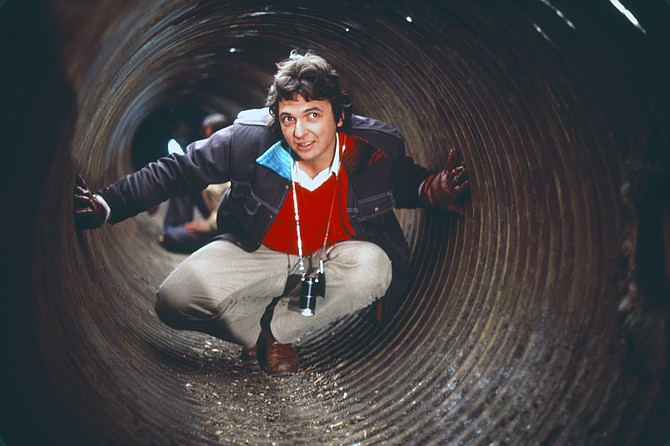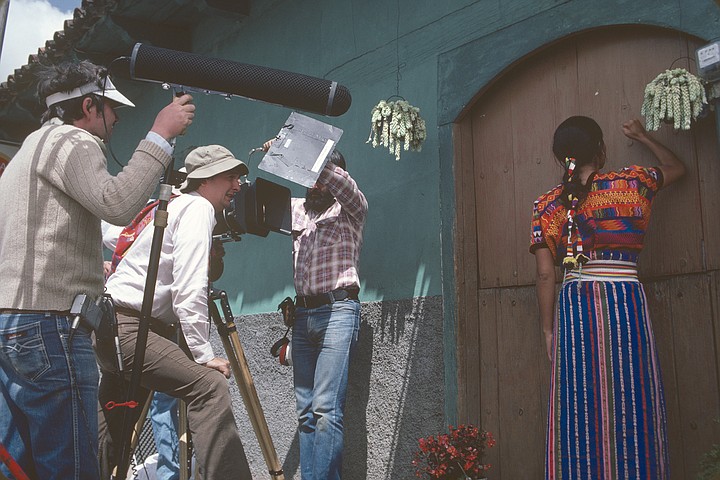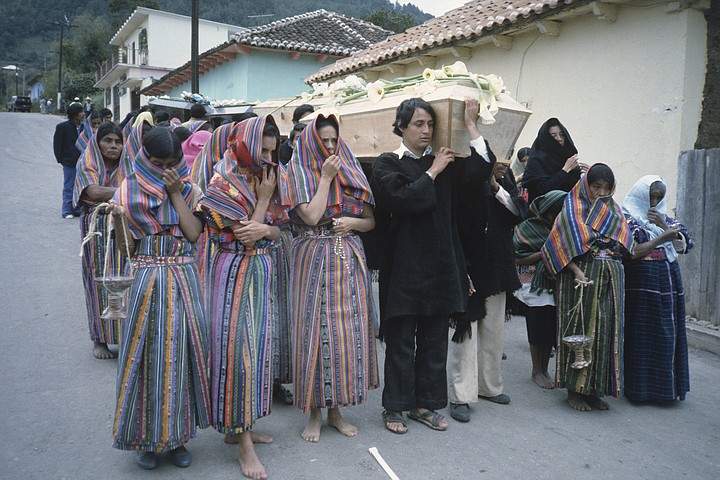 Facebook
Facebook
 X
X
 Instagram
Instagram
 TikTok
TikTok
 Youtube
Youtube

El Norte: Before
Film director and self-identified Mexican-American Gregory Nava grew up in North Park during the ‘50s, but he had family in Mexico, and crossed the border “three to four times a week.” And when he attended Saint Augustine High School, “there were all kinds of guys from Tijuana going to school with me.” But despite the porosity, young Nava still knew the border was there, and that not everyone could cross. “When you’re young, you don’t understand,” he says. “But as you grow up, you come to understand, and then you go on a search for why these situations exist. And you go on a search for your own identity. That’s what El Norte was for me, trying to understand and resolve those feelings.”

Nava is talking about his second feature, the indie immigrant epic that broke out at the 1983 Telluride film festival, played for over a year in New York and Los Angeles (and San Diego), and earned him an Oscar nomination for Best Screenplay along with his wife, Anna Thomas. The film follows two Mayan peasants — brother and sister Enrique and Rosa — as they flee horrific violence in Guatemala, escape across Mexico and then the US border, and set about making a life in Los Angeles.
Though his production crew was “just five guys and a VW van,” Nava sought to conjure the magical realism made famous by Gabriel Garcia Marquez. “Everything that happens in the film really happened to somebody. I worked closely with the Mayan community in Los Angeles; people who were fleeing genocide in Guatemala. I wanted to find something that would make the audience feel the danger and horror involved in crossing the border, and I interviewed a guy who told me about crawling through the old sewer tunnels and being attacked by rats. It’s a real thing, but for the audience, it’s also like a horrific dream from which you can’t wake up. And then when they emerge and see the lights of San Diego, it’s like Oz. The research, combined with the heightened feeling, plus mythology — that’s dream realism.”
The film’s making brought its own measure of realism and heightened feeling. Articles surrounding El Norte’s release described Nava’s dealings with armed terrorists in Chiapas: the kidnapping of his cinematographer, the ransoming of his negative. “El Norte was an outlaw film,” says Nava, “a story nobody wanted to see made.” Because he wanted to use Mexican actors and shoot in America, “we couldn’t make deals with the unions.” So when the actors came into America to shoot, they came in illegally. “The interrogation scene was shot in the Border Patrol office where they actually interrogate people. The actors were scared shitless, because they didn’t have papers! And do you think they give you permission to shoot the slums in TJ? We had the camera in the van, with the lens poking through a curtain. The scene where they run along the border fence was shot by the real border fence, and there were coyotes telling them, ‘This is a bad place; come with us and we’ll take you to a better place.’”
El Norte: After
Looking back on his immigrant epic, director Gregory Nava recalls that film critic Roger Ebert — who called the film “a Grapes of Wrath for our time” — “used to tell me, ‘In making a movie that was not political, you make the most powerful political film, because it lets the audience draw their own conclusions.’ We wanted to have people walk in the shoes of Enrique and Rosa, to feel what it’s like to see your parents killed and to have to flee to save your own life. When you see it, you have compassion, because you think, ‘I would do the same thing.’ People have a right to save their lives.”

After the film’s release in ’84, “both Ronald Reagan and Walter Mondale mentioned it during that year’s televised presidential debates.” It helped that El Norte couldn’t have been more timely: Mondale was pressing Reagan on the United States’ covert involvement in Central America’s political unrest (besides the Guatemalan civil war that the story used as a catalyst, “there was war in El Salvador” and Nicaragua). “Two years later, the Simpson-Mazzoli immigration reform act was passed, which gave protected status to refugees from Central America.” Nava believes his film “helped change the law of the United States, and it saved lives. And now Donald Trump has rescinded that protected status, so here we are again.”
And here is El Norte again as well. In 1995, the film was selected for preservation in the US National Film Registry by the Library of Congress. In 2017, it received a digital restoration from the Academy Film Archive that gave new vibrancy to the film’s dramatic and drenching use of color. And last year, “We had a premiere of the restored version at the Samuel Goldwyn Theater at the Motion Picture Academy. People were lined up around the block in Beverly Hills; we were turning them away. There were people in the audience from Lionsgate, and they said, ‘Let’s do a Fathom Event with this.’”

One of those people had personal as well as professional reasons. “When we made the movie, the sewer tunnels that people used to get across the border were sort of a secret. But after the movie came out, everybody knew about them, and the Border Patrol went and cemented them all shut. After we had the screening, one of the women who does distribution for Lionsgate came up to me in tears. She told me, ‘My father crawled through those tunnels.’ He was undocumented, but he was able to get legalized through the Simpson-Mazzoli act. Now his daughter is helping to distribute the film. That’s America. This country was built by the wretched refuse, the tired, and the poor — like the poem says. The people that other countries don’t want.”
The restored El Norte will play this Sunday, September 15, at 2 pm at the AMC Mission Valley 20, the AMC Plaza Bonita 14, and the AMC Otay Ranch 12.


El Norte: Before
Film director and self-identified Mexican-American Gregory Nava grew up in North Park during the ‘50s, but he had family in Mexico, and crossed the border “three to four times a week.” And when he attended Saint Augustine High School, “there were all kinds of guys from Tijuana going to school with me.” But despite the porosity, young Nava still knew the border was there, and that not everyone could cross. “When you’re young, you don’t understand,” he says. “But as you grow up, you come to understand, and then you go on a search for why these situations exist. And you go on a search for your own identity. That’s what El Norte was for me, trying to understand and resolve those feelings.”

Nava is talking about his second feature, the indie immigrant epic that broke out at the 1983 Telluride film festival, played for over a year in New York and Los Angeles (and San Diego), and earned him an Oscar nomination for Best Screenplay along with his wife, Anna Thomas. The film follows two Mayan peasants — brother and sister Enrique and Rosa — as they flee horrific violence in Guatemala, escape across Mexico and then the US border, and set about making a life in Los Angeles.
Though his production crew was “just five guys and a VW van,” Nava sought to conjure the magical realism made famous by Gabriel Garcia Marquez. “Everything that happens in the film really happened to somebody. I worked closely with the Mayan community in Los Angeles; people who were fleeing genocide in Guatemala. I wanted to find something that would make the audience feel the danger and horror involved in crossing the border, and I interviewed a guy who told me about crawling through the old sewer tunnels and being attacked by rats. It’s a real thing, but for the audience, it’s also like a horrific dream from which you can’t wake up. And then when they emerge and see the lights of San Diego, it’s like Oz. The research, combined with the heightened feeling, plus mythology — that’s dream realism.”
The film’s making brought its own measure of realism and heightened feeling. Articles surrounding El Norte’s release described Nava’s dealings with armed terrorists in Chiapas: the kidnapping of his cinematographer, the ransoming of his negative. “El Norte was an outlaw film,” says Nava, “a story nobody wanted to see made.” Because he wanted to use Mexican actors and shoot in America, “we couldn’t make deals with the unions.” So when the actors came into America to shoot, they came in illegally. “The interrogation scene was shot in the Border Patrol office where they actually interrogate people. The actors were scared shitless, because they didn’t have papers! And do you think they give you permission to shoot the slums in TJ? We had the camera in the van, with the lens poking through a curtain. The scene where they run along the border fence was shot by the real border fence, and there were coyotes telling them, ‘This is a bad place; come with us and we’ll take you to a better place.’”
El Norte: After
Looking back on his immigrant epic, director Gregory Nava recalls that film critic Roger Ebert — who called the film “a Grapes of Wrath for our time” — “used to tell me, ‘In making a movie that was not political, you make the most powerful political film, because it lets the audience draw their own conclusions.’ We wanted to have people walk in the shoes of Enrique and Rosa, to feel what it’s like to see your parents killed and to have to flee to save your own life. When you see it, you have compassion, because you think, ‘I would do the same thing.’ People have a right to save their lives.”

After the film’s release in ’84, “both Ronald Reagan and Walter Mondale mentioned it during that year’s televised presidential debates.” It helped that El Norte couldn’t have been more timely: Mondale was pressing Reagan on the United States’ covert involvement in Central America’s political unrest (besides the Guatemalan civil war that the story used as a catalyst, “there was war in El Salvador” and Nicaragua). “Two years later, the Simpson-Mazzoli immigration reform act was passed, which gave protected status to refugees from Central America.” Nava believes his film “helped change the law of the United States, and it saved lives. And now Donald Trump has rescinded that protected status, so here we are again.”
And here is El Norte again as well. In 1995, the film was selected for preservation in the US National Film Registry by the Library of Congress. In 2017, it received a digital restoration from the Academy Film Archive that gave new vibrancy to the film’s dramatic and drenching use of color. And last year, “We had a premiere of the restored version at the Samuel Goldwyn Theater at the Motion Picture Academy. People were lined up around the block in Beverly Hills; we were turning them away. There were people in the audience from Lionsgate, and they said, ‘Let’s do a Fathom Event with this.’”

One of those people had personal as well as professional reasons. “When we made the movie, the sewer tunnels that people used to get across the border were sort of a secret. But after the movie came out, everybody knew about them, and the Border Patrol went and cemented them all shut. After we had the screening, one of the women who does distribution for Lionsgate came up to me in tears. She told me, ‘My father crawled through those tunnels.’ He was undocumented, but he was able to get legalized through the Simpson-Mazzoli act. Now his daughter is helping to distribute the film. That’s America. This country was built by the wretched refuse, the tired, and the poor — like the poem says. The people that other countries don’t want.”
The restored El Norte will play this Sunday, September 15, at 2 pm at the AMC Mission Valley 20, the AMC Plaza Bonita 14, and the AMC Otay Ranch 12.
Comments